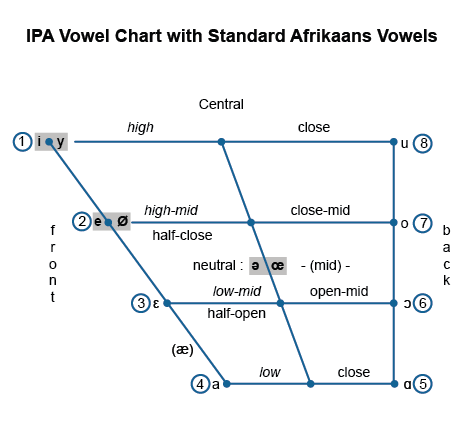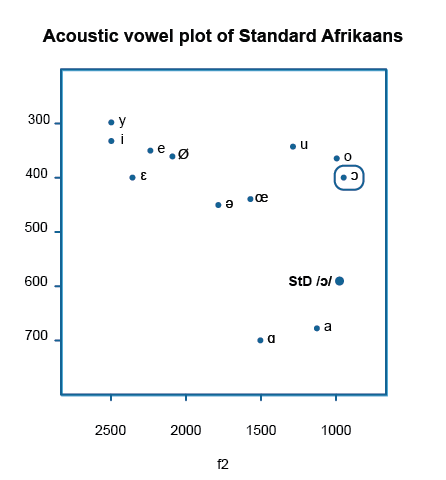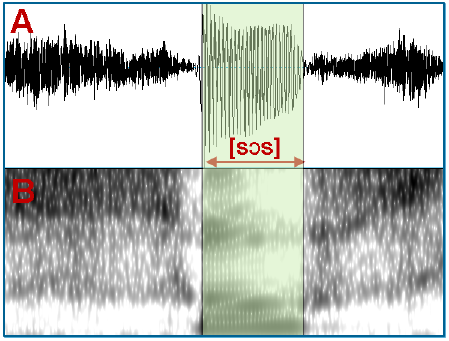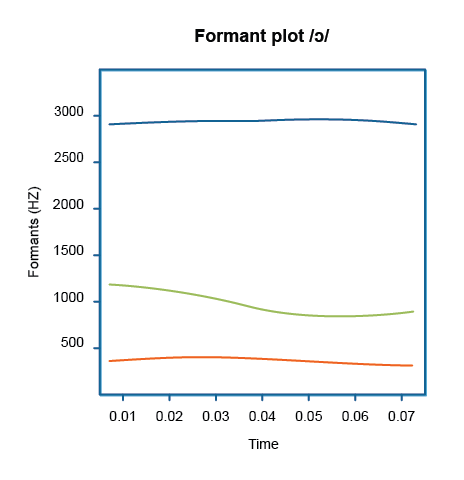- Dutch
- Frisian
- Saterfrisian
- Afrikaans
-
- Phonology
- Segment inventory
- Phonotactics
- Phonological processes
- Phonology-morphology interface
- Word stress
- Primary stress in simplex words
- Monomorphemic words
- Diachronic aspects
- Generalizations on stress placement
- Default penultimate stress
- Lexical stress
- The closed penult restriction
- Final closed syllables
- The diphthong restriction
- Superheavy syllables (SHS)
- The three-syllable window
- Segmental restrictions
- Phonetic correlates
- Stress shifts in loanwords
- Quantity-sensitivity
- Secondary stress
- Vowel reduction in unstressed syllables
- Stress in complex words
- Primary stress in simplex words
- Accent & intonation
- Clitics
- Spelling
- Morphology
- Word formation
- Compounding
- Nominal compounds
- Verbal compounds
- Adjectival compounds
- Affixoids
- Coordinative compounds
- Synthetic compounds
- Reduplicative compounds
- Phrase-based compounds
- Elative compounds
- Exocentric compounds
- Linking elements
- Separable complex verbs (SCVs)
- Gapping of complex words
- Particle verbs
- Copulative compounds
- Derivation
- Numerals
- Derivation: inputs and input restrictions
- The meaning of affixes
- Non-native morphology
- Cohering and non-cohering affixes
- Prefixation
- Suffixation
- Nominal suffixation: person nouns
- Conversion
- Pseudo-participles
- Bound forms
- Nouns
- Nominal prefixes
- Nominal suffixes
- -aal and -eel
- -aar
- -aard
- -aat
- -air
- -aris
- -ast
- Diminutives
- -dom
- -een
- -ees
- -el (nominal)
- -elaar
- -enis
- -er (nominal)
- -erd
- -erik
- -es
- -eur
- -euse
- ge...te
- -heid
- -iaan, -aan
- -ief
- -iek
- -ier
- -ier (French)
- -ière
- -iet
- -igheid
- -ij and allomorphs
- -ijn
- -in
- -ing
- -isme
- -ist
- -iteit
- -ling
- -oir
- -oot
- -rice
- -schap
- -schap (de)
- -schap (het)
- -sel
- -st
- -ster
- -t
- -tal
- -te
- -voud
- Verbs
- Adjectives
- Adverbs
- Univerbation
- Neo-classical word formation
- Construction-dependent morphology
- Morphological productivity
- Compounding
- Inflection
- Inflection and derivation
- Allomorphy
- The interface between phonology and morphology
- Word formation
- Syntax
- Preface and acknowledgements
- Verbs and Verb Phrases
- 1 Characterization and classification
- 2 Projection of verb phrases I:Argument structure
- 3 Projection of verb phrases II:Verb frame alternations
- Introduction
- 3.1. Main types
- 3.2. Alternations involving the external argument
- 3.3. Alternations of noun phrases and PPs
- 3.3.1. Dative/PP alternations (dative shift)
- 3.3.1.1. Dative alternation with aan-phrases (recipients)
- 3.3.1.2. Dative alternation with naar-phrases (goals)
- 3.3.1.3. Dative alternation with van-phrases (sources)
- 3.3.1.4. Dative alternation with bij-phrases (possessors)
- 3.3.1.5. Dative alternation with voor-phrases (benefactives)
- 3.3.1.6. Conclusion
- 3.3.1.7. Bibliographical notes
- 3.3.2. Accusative/PP alternations
- 3.3.3. Nominative/PP alternations
- 3.3.1. Dative/PP alternations (dative shift)
- 3.4. Some apparent cases of verb frame alternation
- 3.5. Bibliographical notes
- 4 Projection of verb phrases IIIa:Selection of clauses/verb phrases
- 5 Projection of verb phrases IIIb:Argument and complementive clauses
- Introduction
- 5.1. Finite argument clauses
- 5.2. Infinitival argument clauses
- 5.3. Complementive clauses
- 6 Projection of verb phrases IIIc:Complements of non-main verbs
- 7 Projection of verb phrases IIId:Verb clusters
- 8 Projection of verb phrases IV: Adverbial modification
- 9 Word order in the clause I:General introduction
- 10 Word order in the clause II:Position of the finite verb (verb-first/second)
- 11 Word order in the clause III:Clause-initial position (wh-movement)
- Introduction
- 11.1. The formation of V1- and V2-clauses
- 11.2. Clause-initial position remains (phonetically) empty
- 11.3. Clause-initial position is filled
- 12 Word order in the clause IV:Postverbal field (extraposition)
- 13 Word order in the clause V: Middle field (scrambling)
- 14 Main-clause external elements
- Nouns and Noun Phrases
- 1 Characterization and classification
- 2 Projection of noun phrases I: complementation
- Introduction
- 2.1. General observations
- 2.2. Prepositional and nominal complements
- 2.3. Clausal complements
- 2.4. Bibliographical notes
- 3 Projection of noun phrases II: modification
- Introduction
- 3.1. Restrictive and non-restrictive modifiers
- 3.2. Premodification
- 3.3. Postmodification
- 3.3.1. Adpositional phrases
- 3.3.2. Relative clauses
- 3.3.3. Infinitival clauses
- 3.3.4. A special case: clauses referring to a proposition
- 3.3.5. Adjectival phrases
- 3.3.6. Adverbial postmodification
- 3.4. Bibliographical notes
- 4 Projection of noun phrases III: binominal constructions
- Introduction
- 4.1. Binominal constructions without a preposition
- 4.2. Binominal constructions with a preposition
- 4.3. Bibliographical notes
- 5 Determiners: articles and pronouns
- Introduction
- 5.1. Articles
- 5.2. Pronouns
- 5.3. Bibliographical notes
- 6 Numerals and quantifiers
- 7 Pre-determiners
- Introduction
- 7.1. The universal quantifier al 'all' and its alternants
- 7.2. The pre-determiner heel 'all/whole'
- 7.3. A note on focus particles
- 7.4. Bibliographical notes
- 8 Syntactic uses of noun phrases
- Adjectives and Adjective Phrases
- 1 Characteristics and classification
- 2 Projection of adjective phrases I: Complementation
- 3 Projection of adjective phrases II: Modification
- 4 Projection of adjective phrases III: Comparison
- 5 Attributive use of the adjective phrase
- 6 Predicative use of the adjective phrase
- 7 The partitive genitive construction
- 8 Adverbial use of the adjective phrase
- 9 Participles and infinitives: their adjectival use
- 10 Special constructions
- Adpositions and adpositional phrases
- 1 Characteristics and classification
- Introduction
- 1.1. Characterization of the category adposition
- 1.2. A formal classification of adpositional phrases
- 1.3. A semantic classification of adpositional phrases
- 1.3.1. Spatial adpositions
- 1.3.2. Temporal adpositions
- 1.3.3. Non-spatial/temporal prepositions
- 1.4. Borderline cases
- 1.5. Bibliographical notes
- 2 Projection of adpositional phrases: Complementation
- 3 Projection of adpositional phrases: Modification
- 4 Syntactic uses of the adpositional phrase
- 5 R-pronominalization and R-words
- 1 Characteristics and classification
- Phonology
-
- General
- Phonology
- Segment inventory
- Phonotactics
- Phonological Processes
- Assimilation
- Vowel nasalization
- Syllabic sonorants
- Final devoicing
- Fake geminates
- Vowel hiatus resolution
- Vowel reduction introduction
- Schwa deletion
- Schwa insertion
- /r/-deletion
- d-insertion
- {s/z}-insertion
- t-deletion
- Intrusive stop formation
- Breaking
- Vowel shortening
- h-deletion
- Replacement of the glide w
- Word stress
- Clitics
- Allomorphy
- Orthography of Frisian
- Morphology
- Inflection
- Word formation
- Derivation
- Prefixation
- Infixation
- Suffixation
- Nominal suffixes
- Verbal suffixes
- Adjectival suffixes
- Adverbial suffixes
- Numeral suffixes
- Interjectional suffixes
- Onomastic suffixes
- Conversion
- Compositions
- Derivation
- Syntax
- Verbs and Verb Phrases
- Characteristics and classification
- Unergative and unaccusative subjects
- Evidentiality
- To-infinitival clauses
- Predication and noun incorporation
- Ellipsis
- Imperativus-pro-Infinitivo
- Expression of irrealis
- Embedded Verb Second
- Agreement
- Negation
- Nouns & Noun Phrases
- Classification
- Complementation
- Modification
- Partitive noun constructions
- Referential partitive constructions
- Partitive measure nouns
- Numeral partitive constructions
- Partitive question constructions
- Nominalised quantifiers
- Kind partitives
- Partitive predication with prepositions
- Bare nominal attributions
- Articles and names
- Pronouns
- Quantifiers and (pre)determiners
- Interrogative pronouns
- R-pronouns
- Syntactic uses
- Adjective Phrases
- Characteristics and classification
- Complementation
- Modification and degree quantification
- Comparison by degree
- Comparative
- Superlative
- Equative
- Attribution
- Agreement
- Attributive adjectives vs. prenominal elements
- Complex adjectives
- Noun ellipsis
- Co-occurring adjectives
- Predication
- Partitive adjective constructions
- Adverbial use
- Participles and infinitives
- Adposition Phrases
- Characteristics and classification
- Complementation
- Modification
- Intransitive adpositions
- Predication
- Preposition stranding
- Verbs and Verb Phrases
-
- General
- Morphology
- Morphology
- 1 Word formation
- 1.1 Compounding
- 1.1.1 Compounds and their heads
- 1.1.2 Special types of compounds
- 1.1.2.1 Affixoids
- 1.1.2.2 Coordinative compounds
- 1.1.2.3 Synthetic compounds and complex pseudo-participles
- 1.1.2.4 Reduplicative compounds
- 1.1.2.5 Phrase-based compounds
- 1.1.2.6 Elative compounds
- 1.1.2.7 Exocentric compounds
- 1.1.2.8 Linking elements
- 1.1.2.9 Separable Complex Verbs and Particle Verbs
- 1.1.2.10 Noun Incorporation Verbs
- 1.1.2.11 Gapping
- 1.2 Derivation
- 1.3 Minor patterns of word formation
- 1.1 Compounding
- 2 Inflection
- 1 Word formation
- Morphology
- Syntax
- Adjectives and adjective phrases (APs)
- 0 Introduction to the AP
- 1 Characteristics and classification of APs
- 2 Complementation of APs
- 3 Modification and degree quantification of APs
- 4 Comparison by comparative, superlative and equative
- 5 Attribution of APs
- 6 Predication of APs
- 7 The partitive adjective construction
- 8 Adverbial use of APs
- 9 Participles and infinitives as APs
- Nouns and Noun Phrases (NPs)
- 0 Introduction to the NP
- 1 Characteristics and Classification of NPs
- 2 Complementation of NPs
- 3 Modification of NPs
- 3.1 Modification of NP by Determiners and APs
- 3.2 Modification of NP by PP
- 3.3 Modification of NP by adverbial clauses
- 3.4 Modification of NP by possessors
- 3.5 Modification of NP by relative clauses
- 3.6 Modification of NP in a cleft construction
- 3.7 Free relative clauses and selected interrogative clauses
- 4 Partitive noun constructions and constructions related to them
- 4.1 The referential partitive construction
- 4.2 The partitive construction of abstract quantity
- 4.3 The numerical partitive construction
- 4.4 The partitive interrogative construction
- 4.5 Adjectival, nominal and nominalised partitive quantifiers
- 4.6 Kind partitives
- 4.7 Partitive predication with a preposition
- 4.8 Bare nominal attribution
- 5 Articles and names
- 6 Pronouns
- 7 Quantifiers, determiners and predeterminers
- 8 Interrogative pronouns
- 9 R-pronouns and the indefinite expletive
- 10 Syntactic functions of Noun Phrases
- Adpositions and Adpositional Phrases (PPs)
- 0 Introduction to the PP
- 1 Characteristics and classification of PPs
- 2 Complementation of PPs
- 3 Modification of PPs
- 4 Bare (intransitive) adpositions
- 5 Predication of PPs
- 6 Form and distribution of adpositions with respect to staticity and construction type
- 7 Adpositional complements and adverbials
- Verbs and Verb Phrases (VPs)
- 0 Introduction to the VP in Saterland Frisian
- 1 Characteristics and classification of verbs
- 2 Unergative and unaccusative subjects and the auxiliary of the perfect
- 3 Evidentiality in relation to perception and epistemicity
- 4 Types of to-infinitival constituents
- 5 Predication
- 5.1 The auxiliary of being and its selection restrictions
- 5.2 The auxiliary of going and its selection restrictions
- 5.3 The auxiliary of continuation and its selection restrictions
- 5.4 The auxiliary of coming and its selection restrictions
- 5.5 Modal auxiliaries and their selection restrictions
- 5.6 Auxiliaries of body posture and aspect and their selection restrictions
- 5.7 Transitive verbs of predication
- 5.8 The auxiliary of doing used as a semantically empty finite auxiliary
- 5.9 Supplementive predication
- 6 The verbal paradigm, irregularity and suppletion
- 7 Verb Second and the word order in main and embedded clauses
- 8 Various aspects of clause structure
- Adjectives and adjective phrases (APs)
-
- General
- Phonology
- Afrikaans phonology
- Segment inventory
- Overview of Afrikaans vowels
- The diphthongised long vowels /e/, /ø/ and /o/
- The unrounded mid-front vowel /ɛ/
- The unrounded low-central vowel /ɑ/
- The unrounded low-central vowel /a/
- The rounded mid-high back vowel /ɔ/
- The rounded high back vowel /u/
- The rounded and unrounded high front vowels /i/ and /y/
- The unrounded and rounded central vowels /ə/ and /œ/
- The diphthongs /əi/, /œy/ and /œu/
- Overview of Afrikaans consonants
- The bilabial plosives /p/ and /b/
- The alveolar plosives /t/ and /d/
- The velar plosives /k/ and /g/
- The bilabial nasal /m/
- The alveolar nasal /n/
- The velar nasal /ŋ/
- The trill /r/
- The lateral liquid /l/
- The alveolar fricative /s/
- The velar fricative /x/
- The labiodental fricatives /f/ and /v/
- The approximants /ɦ/, /j/ and /ʋ/
- Overview of Afrikaans vowels
- Word stress
- The phonetic properties of stress
- Primary stress on monomorphemic words in Afrikaans
- Background to primary stress in monomorphemes in Afrikaans
- Overview of the Main Stress Rule of Afrikaans
- The short vowels of Afrikaans
- Long vowels in monomorphemes
- Primary stress on diphthongs in monomorphemes
- Exceptions
- Stress shifts in place names
- Stress shift towards word-final position
- Stress pattern of reduplications
- Phonological processes
- Vowel related processes
- Consonant related processes
- Homorganic glide insertion
- Phonology-morphology interface
- Phonotactics
- Morphology
- Syntax
- Afrikaans syntax
- Nouns and noun phrases
- Characteristics of the NP
- Classification of nouns
- Complementation of NPs
- Modification of NPs
- Binominal and partitive constructions
- Referential partitive constructions
- Partitive measure nouns
- Numeral partitive constructions
- Partitive question constructions
- Partitive constructions with nominalised quantifiers
- Partitive predication with prepositions
- Binominal name constructions
- Binominal genitive constructions
- Bare nominal attribution
- Articles and names
- Pronouns
- Quantifiers, determiners and predeterminers
- Syntactic uses of the noun phrase
- Adjectives and adjective phrases
- Characteristics and classification of the AP
- Complementation of APs
- Modification and Degree Quantification of APs
- Comparison by comparative, superlative and equative degree
- Attribution of APs
- Predication of APs
- The partitive adjective construction
- Adverbial use of APs
- Participles and infinitives as adjectives
- Verbs and verb phrases
- Characterisation and classification
- Argument structure
- Verb frame alternations
- Complements of non-main verbs
- Verb clusters
- Complement clauses
- Adverbial modification
- Word order in the clause: Introduction
- Word order in the clause: position of the finite Verb
- Word order in the clause: Clause-initial position
- Word order in the clause: Extraposition and right-dislocation in the postverbal field
- Word order in the middle field
- Emphatic constructions
- Adpositions and adposition phrases
The rounded mid-high back /ɔ/ is quite common in Afrikaans, especially in closed syllables. It is a member of the set of short vowels, /i/, /y/, /u/, /ɛ/, /œ/, /ә/, /ɔ/ and /ɑ/ (Le Roux and Pienaar 1927; Van Wyk 1977; Coetzee 1981; De Villiers and Ponelis 1987; Combrink and De Stadler 1987; Wissing 2017).
The Standard Afrikaans (SAfr.) speaker referred to below is a prototypical standard speaker and a prominent radio personality. In a recent survey she was nominated as the most appropriate speaker of Standard Afrikaans. Participants (N = 344) in this survey were from all walks of life, male and female and of different ages and ethnicity groups. In some of the charts below the /ɔ/ of Standard Dutch (SNdl.) is shown alongside that of SAfr. Vowel information with respect to SNdl. was found in the description of Dutch /ɔ/.
Where relevant, acoustic vowel information on the Afrikaans as spoken in Genadendal, Western Cape (henceforth abbreviated as GDAfr.), is provided. It is considered here to be a prototype of coloured Afrikaans ( CAfr.). There are of course many other variants of coloured Afrikaans as well. The above-mentioned acoustic information is based on recordings of a number of aged female speakers of Genadendal.
The phoneme /ɔ/ is a rounded, mid to high-mid vowel in Afrikaans. The tongue body is somewhat raised and retracted, the lips are slightly rounded and the front cavity is enlarged due to pursing of the lips.
Figure 1 below shows the Afrikaans vowel phonemes within the IPA vowel chart. Note that this is an idealised depiction; a realistic acoustic vowel chart is presented as Figure 2 below.

The formant frequencies as well as the temporal values of vowels vary per speaker based on age, gender, speech community, and also according to speech rate and style.
The phoneme /ɔ/ is a short vowel, in some instances lengthened before /r/, and sometimes also before /l/. An average duration of 83 ms was found for the SAfr. speaker, measured in the phonetic context /s_s/, read in word-list style.
The following table and set of figures highlights the formant frequency features of /ɔ/. It has been compared to that of Standard Dutch (SNdl.) as well as to coloured Afrikaans (CAfr.). Vowel information with respect to SNdl. was found in the description of Dutch /ɔ/.

- The phoneme /ɔ/ of SAfr. is encircled; that of SNdl. is indicated by the abbreviation StD_ɛ.
- The F1 value of CAfr. (408 Hz) is practically identical to that of SAfr. and both are much lower than SNdl.'s 578 Hz, indicating a higher vowel. CAfr.'s F2 of 763 Hz means that it is more rounded than either that of SAfr. (946 Hz), or SNdl. (933 Hz) (see also Table 1 below).
Figure 3 presents a waveform and associated spectrogram of the word sos, while Figure 4 is a plot of the formant tracks of its vowel, /ɔ/.
Normally formant characteristics of vowels are visible in their spectrograms, especially with regard to their formant tracks. Figure 3 shows the vowel /ɔ/ as embedded in the nonsense form /s_s/, here /sos/ [sɔs]. In the present case (Figure 3) the formant charateristics are less clear, but Figure 4 (the formant plot) is more distinct in this regard.
| Sound | Sound waves and spectrogram |
 | Figure 3  [click image to enlarge] |
Listen to the pronunciation of the nonsense words that were used in producing the waveform and the spectrogram
Figure 4 shows the formant tracks of the vowel /ɔ/, as produced in the same phonetic context as in Figure 3, viz. /s_s/. It gives the F1/F2 values of this vowel as presented in Table 2. F3 is added to the plot, but merely for secondary reasons.
| /ɔ/ | F1 (Hz) | F2 (Hz) |
| Standard Afrikaans | 402 | 946 |
| Standard Dutch | 578 | 933 |

A possible feature specification of /ɔ/ is +HIGH, +MID, +BACK, +ROUND and -LONG.
The Afrikaans phoneme /ɔ/ behaves phonologically as a true short vowel. As a non-high vowel, is may realised as nasalised, and lengthened before /r/ (in wors, /vɔrs/ [vɔ:rs] sausage) as well as in some cases before /l/, as in volg, /fɔlx/ [fɔ:lx] follow).
Although nasalisation of all Afrikaans vowels has been a distinct characteristic of the vowel system during most of the last century (cf. Le Roux and Pienaar 1927), it seems to be much less the case in recent years, especially in the speech of younger persons (De Villiers and Ponelis 1992). Practically no evidence is found in coloured varieties, as is evident in the pronunciation of Genadendal Afrikaans speakers.
As a nonhigh vowel, /ɔ/ is more readily nasalised however. As with other Afrikaans vowels, nasalisation happens mostly when followed by the alveolar nasal /n/ + a fricative consonant, predominantly /s/. Though not exclusively, nasalisation is more to be expected when the alveolar nasal is tautosyllabic, as in the first person plural ons /ɔns/ [ɔ̃:s] we(Coetzee 1977).
Most short vowels are optionally lengthened when followed by /r/ as coda, notably in words with a high frequency. (4a) shows the most common cases, viz. lengthening of /i/, /u/, /y/. In quite a number of instances, as illustrated in (4b) and (4c), the mid-high short vowels /ɛ/ and /ɔ/ are also notably elongated.
The long /ɔ/ in more may be ascribed to lengthening in an open syllable, followed by the deletion of /x/ in the original morgen.
Lengthened vowels in pre- /r/ context sometimes trigger semantic differences, for example:
A feature of Afrikaans is the reduction of /ɔ/ to schwa in the suffix -ɔr/ in frequently used words as doktor and professtor, but not in uncommon words like mentor.
The phoneme /ɔ/ can occur without an onset position, or may be preceded by up to three consonants. Except in a few interjections, like jô, it should be followed by one or at most two consonants. No other restrictions on its distribution have been noted.
- 1977Nasalering in Afrikaans.Tydskrif vir Geesteswetenskappe1728-46,
- 1981Fonetiek vir eerstejaars.Academica
- 1987Afrikaanse fonologie.Macmillan
- 1987Afrikaanse klankleer.Tafelberg
- 1992Afrikaanse klankleer.Tafelberg
- 1927Afrikaanse fonetiek.Juta
- 1927Afrikaanse fonetiek.Juta
- 1977Praktiese fonetiek vir taalstudente: 'n inleiding.Butterworth
- 2017FonologieVan Schaik
